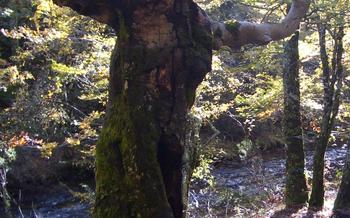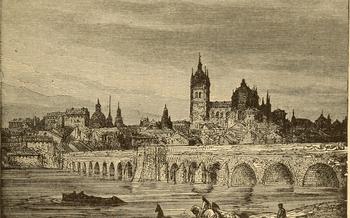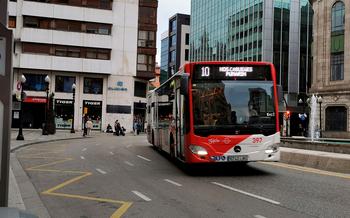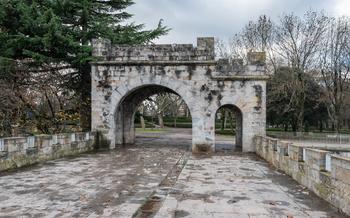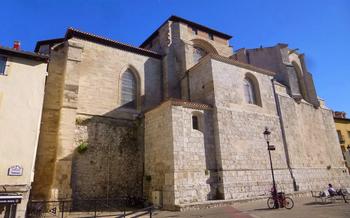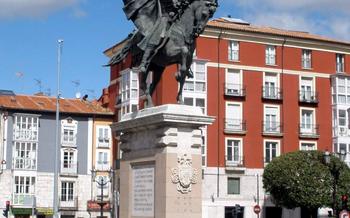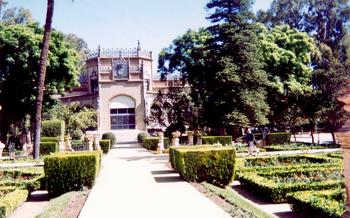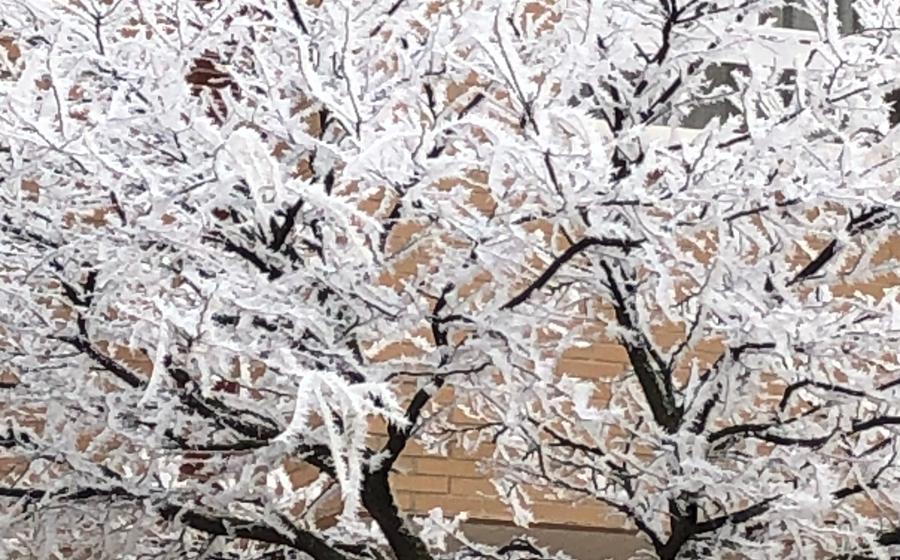
Necrópolis de Cuyacabras
- Necrópolis de Cuyacabras: A Mysterious and Ancient Burial Site
- Unveiling the Secrets of the Chambered Tombs
- Exploring the Symbolism of the Rock Art
- Interpreting the Burials and Rituals
- The Legacy of the Necrópolis de Cuyacabras
- Planning Your Visit to the Necrópolis de Cuyacabras
- Capturing the Essence of the Necrópolis
- Experiencing the Natural Beauty of the Surrounding Area
- Immersing Yourself in Local Culture and Cuisine
- Unearthing the History of Burgos
- Practical Tips for a Smooth Visit
- Accommodation Options Near the Necrópolis
- Transportation to and from the Necrópolis
- Additional Activities in the Region
- Insider Tip: Hidden Gems and Local Secrets
Necrópolis de Cuyacabras: A Mysterious and Ancient Burial Site
In the heart of the Cuyacabras Valley, nestled amid rolling hills and lush greenery, lies the Necrópolis de Cuyacabras, a captivating prehistoric necropolis that shrouds itself in mystery and intrigue. This ancient burial site, dating back to the Bronze Age, holds a wealth of secrets that have captivated archaeologists and historians alike. As you embark on a journey to explore this enigmatic necropolis, prepare to be mesmerized by its unique architectural features, intriguing chambered tombs, and captivating rock art, all of which bear witness to the rich cultural and religious practices of a bygone era.
The Necrópolis de Cuyacabras, conveniently situated just 20 kilometers northeast of Burgos, is easily accessible by car or organized tour. Once you arrive at the site, you'll be struck by its stunning location, surrounded by picturesque landscapes that seem to echo the whispers of time. The necropolis comprises a series of chambered tombs, each carefully constructed using large stone slabs and exhibiting remarkable architectural precision. These tombs, arranged in a mesmerizing cluster, create a sense of awe and wonder as you contemplate the ingenuity and craftsmanship of our ancestors.
Prepare to be captivated by the unique characteristics that set the Necrópolis de Cuyacabras apart from other prehistoric burial sites. One striking feature is the presence of numerous petroglyphs, or rock carvings, that adorn the walls of the tombs. These enigmatic symbols and representations of animals, humans, and abstract motifs offer glimpses into the symbolic language and beliefs of the ancient inhabitants of the region. Furthermore, the necropolis's location within a natural cave system adds to its mystique, creating a sacred and secluded space for the performance of burial rituals and the commemoration of the deceased.
Unveiling the Secrets of the Chambered Tombs
Constructed with remarkable precision, the chambered tombs at the Necrópolis de Cuyacabras exhibit a high level of craftsmanship and engineering skills. These subterranean structures, carved into the bedrock, comprise multiple chambers connected by narrow passages. Each chamber served a specific purpose, with some designated for burials and others possibly used for rituals or storage.
The tombs' design allowed for the placement of multiple bodies, suggesting a communal burial practice. Archaeological excavations have revealed a wealth of artifacts within the chambers, including pottery, jewelry, tools, and weapons. These grave goods provide valuable insights into the beliefs and customs of the people who buried their dead here.
The construction of these elaborate tombs indicates a sophisticated society that placed great importance on death and the afterlife. The presence of multiple chambers within each tomb suggests a social hierarchy or differentiation among the buried individuals. The rich array of grave goods further underscores the significance of these burials, as they likely accompanied the deceased into the next realm.
Exploring the Symbolism of the Rock Art
The Necrópolis de Cuyacabras is renowned for its remarkable collection of rock art, which adds to the site's enigmatic allure. These petroglyphs, etched into the rock surfaces of the tombs and surrounding area, offer valuable insights into the beliefs and practices of the ancient inhabitants.
The artistic styles and techniques employed in the petroglyphs vary, showcasing a diverse range of motifs and symbols. Depictions of animals, such as deer, horses, and bulls, are common, likely representing the importance of hunting and animal husbandry in the community. Human figures, often depicted in a simplistic or schematic style, may symbolize the deceased or their relatives.
Abstract symbols, such as spirals, concentric circles, and geometric patterns, are also frequently encountered. These symbols may have had religious or magical significance, perhaps representing celestial bodies, natural phenomena, or other abstract concepts. Some researchers believe that these symbols may have been used as a form of writing or communication, conveying messages or stories.
Interpreting the symbolism of the rock art at the Necrópolis de Cuyacabras is an ongoing challenge for archaeologists and scholars. By analyzing the motifs and their contexts, researchers aim to unravel the cultural and religious beliefs of the ancient community that created these remarkable works of art. These petroglyphs provide a glimpse into the minds and imaginations of our prehistoric ancestors, offering a unique perspective on their worldview and spiritual practices.
Interpreting the Burials and Rituals
The analysis of skeletal remains and grave goods found at the Necrópolis de Cuyacabras offers valuable insights into the burial practices and social customs of the prehistoric inhabitants of the region. The presence of grave goods, such as pottery, tools, and ornaments, suggests that the burials were accompanied by rituals and beliefs about the afterlife. Evidence of social stratification and hierarchy can be seen in the variation in the quantity and quality of grave goods, indicating that some individuals were buried with more elaborate offerings than others. Comparison with other prehistoric burial sites in Europe helps to contextualize the practices observed at the necropolis and provides a broader understanding of the social and cultural dynamics of the period.
The Legacy of the Necrópolis de Cuyacabras
The Necrópolis de Cuyacabras has left an indelible mark on our understanding of prehistoric cultures and funerary practices. Its discovery and subsequent excavations have shed light on the lives and beliefs of the ancient people who inhabited this region. The necropolis has become a valuable source of information for archaeologists and anthropologists, providing insights into social organization, religious beliefs, and artistic expression.
Ongoing research and archaeological investigations continue to uncover new secrets about the necropolis and its inhabitants. Researchers are working to decipher the meaning of the rock art, analyze skeletal remains, and interpret the significance of the grave goods found within the tombs. These ongoing studies are helping to piece together the puzzle of prehistoric life in this region and contribute to our knowledge of ancient burial practices.
Recognizing its outstanding universal value, UNESCO designated the Necrópolis de Cuyacabras as a World Heritage Site in 199This prestigious recognition highlights the importance of the necropolis as a cultural and historical treasure. Conservation efforts are underway to preserve the site for future generations, ensuring that its legacy continues to inspire and educate.
Planning Your Visit to the Necrópolis de Cuyacabras
To ensure a smooth and enjoyable visit, it's crucial to plan your trip carefully. For optimal weather conditions and fewer crowds, aim to visit during the shoulder seasons (spring or fall). Guided tours are available for a deeper understanding of the site's history and significance. However, self-guided exploration allows you to set your own pace and explore at your leisure.
The necropolis is accessible to visitors of all abilities, with designated paths and ramps for wheelchair users. On-site facilities include restrooms, a visitor center with informative exhibits, and a small gift shop where you can purchase souvenirs and guidebooks.
Capturing the Essence of the Necrópolis
Photographers and enthusiasts of visual storytelling will find the Necrópolis de Cuyacabras a treasure trove of captivating subjects. To capture the essence of this ancient site, consider using a wide-angle lens to encompass the vastness of the necropolis and the surrounding landscape. Experiment with different vantage points to create dynamic compositions that convey the scale and grandeur of the site.
For close-up shots of the rock art, use a macro lens to reveal the intricate details and symbolism etched into the rock surfaces. Pay attention to the play of light and shadow, as the changing angles of the sun can dramatically alter the appearance of the petroglyphs.
When photographing the necropolis, it's essential to be respectful of the site's cultural significance and minimize any potential impact on its preservation. Avoid using flash photography, as it can damage the delicate rock surfaces. Instead, utilize natural light to your advantage or consider using a tripod for low-light conditions.
Share your experiences and stunning captures with the world through social media and travel blogs. Use hashtags related to the site and the region to connect with other enthusiasts and contribute to the collective knowledge and appreciation of this remarkable place.
Experiencing the Natural Beauty of the Surrounding Area
Beyond the captivating mysteries of the Necrópolis de Cuyacabras, the surrounding region offers a wealth of natural beauty that invites exploration and immersion. The Cuyacabras Valley, where the necropolis is situated, is a picturesque tapestry of rolling hills, verdant meadows, and shimmering rivers. Hiking trails wind through the valley, leading to panoramic viewpoints that offer breathtaking vistas of the landscape.
For those seeking a closer connection with nature, the valley is home to a diverse array of wildlife and birdlife. Keen-eyed observers may spot soaring eagles, graceful hawks, and a variety of smaller birds flitting among the trees. The valley's flora is equally diverse, with wildflowers blooming in vibrant hues throughout the year.
Whether you choose to embark on a leisurely hike, enjoy a picnic lunch in a secluded meadow, or simply relax and soak in the tranquility of the natural surroundings, the Cuyacabras Valley offers a sanctuary for nature lovers and those seeking respite from the urban hustle and bustle.
Immersing Yourself in Local Culture and Cuisine
To truly immerse yourself in the local culture of the Cuyacabras region, venture into the nearby villages and towns. These charming settlements offer a glimpse into traditional Spanish life, where you can experience the warmth and hospitality of the locals.
Indulge in the region's culinary delights by sampling regional delicacies at local restaurants. Savor the flavors of traditional dishes prepared with fresh, local ingredients. From hearty stews to delectable tapas, the gastronomy of the region is sure to tantalize your taste buds.
Discover the talents of local artisans who create unique crafts and products. Visit their workshops and galleries to admire their skills and take home a piece of the region's cultural heritage.
Participate in local festivals and events that showcase the region's rich traditions. These vibrant celebrations offer a chance to witness traditional dances, music, and costumes, providing an unforgettable glimpse into the heart of Spanish culture.
Unearthing the History of Burgos
Burgos, the capital city of the province of the same name, is a treasure trove of history and culture. Located just a short distance from the Necrópolis de Cuyacabras, Burgos boasts a rich heritage that is waiting to be explored.
The city's crown jewel is undoubtedly the Burgos Cathedral. A masterpiece of Gothic architecture, the cathedral is a UNESCO World Heritage Site and one of the most impressive examples of its kind in Spain. Its soaring spires, intricate carvings, and stunning stained-glass windows are a testament to the skill and artistry of the medieval builders.
Beyond the cathedral, Burgos is home to a wealth of other cultural landmarks and museums. The Museo de Burgos houses a fascinating collection of archaeological finds, including artifacts from the Necrópolis de Cuyacabras, as well as works of art from various periods of history. The Monasterio de las Huelgas is a former royal monastery that now serves as a museum, showcasing medieval manuscripts, tapestries, and other treasures.
Walking through the historic center of Burgos is like stepping back in time. The narrow cobblestone streets are lined with centuries-old buildings, many of which have been meticulously restored. The Plaza Mayor, the city's main square, is a lively gathering place surrounded by historic buildings, including the Casa del Cordón, a former palace that now houses the city's tourist information office.
For those interested in learning more about the city's past, a visit to the Archivo Histórico Provincial de Burgos is a must. This archive houses a vast collection of documents and manuscripts that provide insights into the city's history, from its founding in the 9th century to the present day.
Practical Tips for a Smooth Visit
Planning a trip to the Necrópolis de Cuyacabras requires some preparation to ensure a smooth and enjoyable experience. Here are some essential tips to keep in mind:
Essential Items:
- Pack comfortable shoes for walking on uneven terrain.
- Bring a hat, sunglasses, and sunscreen to protect yourself from the sun.
- Carry a water bottle to stay hydrated, especially during warm weather.
- Consider bringing a small backpack to carry your essentials.
- If you plan to take photographs, bring a camera with a wide-angle lens.
Clothing and Footwear:
- Dress in layers as the weather can be unpredictable in the mountains.
- Choose lightweight, breathable fabrics that are suitable for outdoor activities.
- Avoid wearing open-toed shoes or sandals due to the rough terrain.
Sun Protection and Hydration:
- Apply sunscreen regularly, even on cloudy days.
- Drink plenty of water to stay hydrated, especially if you are hiking or exploring the surrounding area.
Safety Precautions:
- Be aware of your surroundings and stay on marked trails.
- Do not disturb or remove any artifacts or structures from the site.
- Respect the cultural significance of the necropolis and avoid any actions that may damage or disrespect the site.
Accommodation Options Near the Necrópolis
For a comfortable and convenient stay during your visit to the Necrópolis de Cuyacabras, various accommodation options are available in the vicinity. Whether you seek budget-friendly hostels, charming guesthouses, or luxurious hotels, there's something to suit every traveler's preference and budget.
If you're looking for budget-friendly options, several hostels and guesthouses in the nearby towns of Aranda de Duero and Peñaranda de Duero offer comfortable accommodations at reasonable prices. These establishments often provide shared dormitories and private rooms, ensuring a social and affordable experience.
For those seeking a more luxurious stay, there are several charming hotels and boutique accommodations in the region. These hotels often feature elegant rooms, modern amenities, and stunning views of the surrounding countryside. Indulge in a relaxing stay with top-notch services and amenities to enhance your visit to the necropolis.
To find the best deals and availability, it's advisable to book your accommodation in advance, especially during peak tourist seasons. Online booking platforms and travel agencies can help you compare prices and find the perfect place to stay that fits your budget and preferences.
For a truly unique and authentic experience, consider staying in a traditional Spanish casa rural or a restored farmhouse. These charming accommodations offer a glimpse into the local culture and provide a serene and peaceful retreat after a day of exploring the necropolis.
Transportation to and from the Necrópolis
Reaching the Necrópolis de Cuyacabras requires careful planning, as public transportation options are limited.
-
From Burgos, the nearest major city, you can take a bus to the town of Hontoria del Pinar, which is located about 10 kilometers from the necropolis. Buses depart from the Burgos bus station several times a day, and the journey takes approximately 1 hour.
-
Once in Hontoria del Pinar, you can either walk to the necropolis, which takes about 30 minutes, or take a taxi. Taxis are readily available at the bus stop, and the fare to the necropolis is typically around €
-
If you prefer the convenience of a guided tour, several tour operators in Burgos offer excursions to the necropolis. These tours usually include transportation to and from Burgos, as well as a guided tour of the site. Guided tours offer the advantage of providing expert insights and explanations about the history and significance of the necropolis.
-
For those who prefer the flexibility of self-guided exploration, renting a car is a good option. Several car rental agencies are located in Burgos, and the drive to the necropolis takes about 45 minutes. Having your own transportation allows you to set your own pace and explore the surrounding area at your leisure.
Additional Activities in the Region
Beyond the captivating Necrópolis de Cuyacabras, the surrounding region offers a wealth of attractions and activities for travelers seeking further exploration. Immerse yourself in the region's rich history by visiting other prehistoric sites, such as the Atapuerca archaeological complex, a UNESCO World Heritage Site renowned for its hominid fossil discoveries. Explore the stunning natural landscapes of the region, including the Montes Obarenes-San Zadornil Natural Park, with its diverse ecosystems, hiking trails, and breathtaking views. Indulge in outdoor activities such as hiking, biking, and horseback riding, surrounded by picturesque scenery. Discover the region's unique cultural experiences, including traditional festivals, local cuisine, and artisanal crafts, offering a glimpse into the authentic Spanish way of life.
Insider Tip: Hidden Gems and Local Secrets
Beyond the main attractions, the region surrounding the Necrópolis de Cuyacabras holds a treasure trove of hidden gems and local secrets waiting to be discovered. Venture off the beaten path to uncover lesser-known archaeological sites, such as the nearby Cueva de los Moros, with its impressive cave paintings. Explore local markets in nearby villages to sample regional delicacies and find unique handmade crafts. Engage with the friendly locals to learn about their traditions, way of life, and stories passed down through generations. These authentic experiences offer a deeper connection to the region's rich cultural heritage, creating lasting memories for every traveler who seeks to immerse themselves in its essence.

